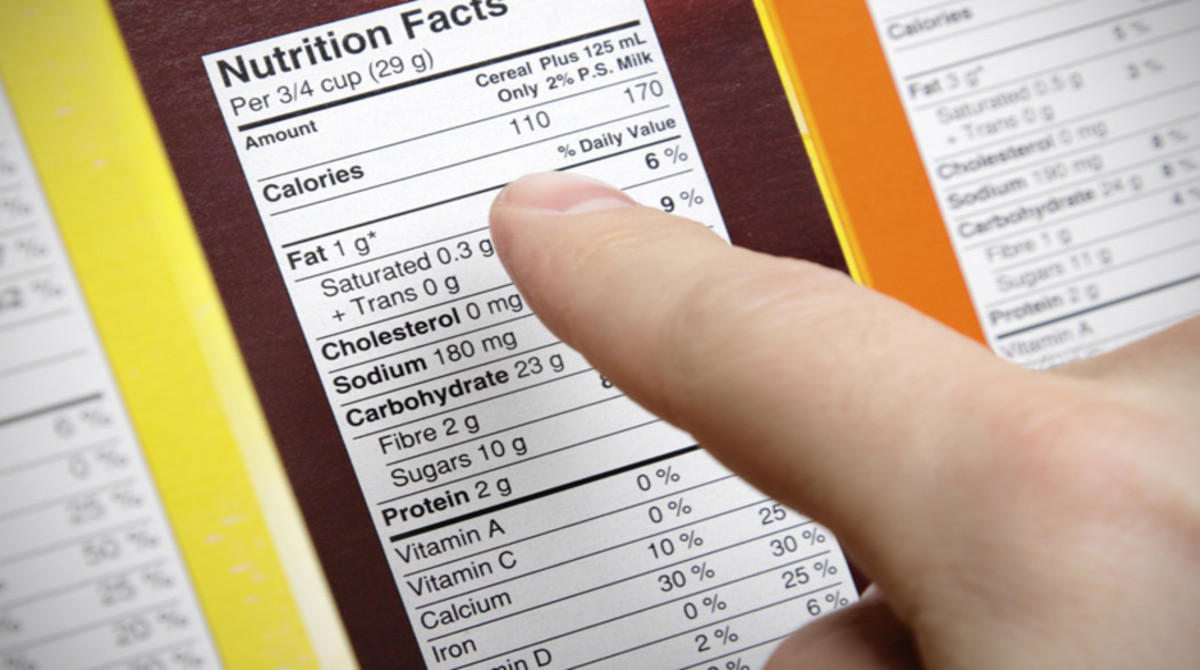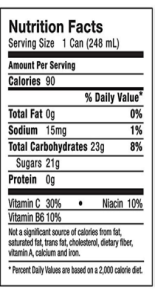Declaration Of Nutrient Values - 100g/Ml Or Serving Size?
July 20, 2022

Every Food Label contains important information such as Nutritional Information. The Nutrition Information Panel lists information in terms of values for certain nutrients present in that food product. This information serves as a guide to the consumers so that they can make the right food selection. Also based on these values the manufacturers can state various nutrition claims that are applicable to the product.
However, the most important question is, ‘How are the nutrient values declared?’ The Codex Alimentarius Commission in its ‘Guidelines for Nutrition labelling’ has stated that, “nutrient values should be expressed in grams per 100g/100ml/package (in case the pack contains only a single portion); in addition, values can also be given per serving”.
Global Vs Indian Regulations
Indian Perspective
Food Safety and Standards Authority of India (FSSAI), the apex Food governing body of India has clearly listed in its ‘Food Safety and Standards (Labelling and Display) Regulations, 2020’ that Nutrition Information should be listed per 100g or 100ml or per single consumption pack of the product.
It should also include the number of servings in the package.
Nutrition Information per serving can be provided, but not instead of per 100g/ml.

Global Perspective
1. The U.S Food and Drug Administration (FDA) in its Regulations has indicated that all nutrient values should be declared as per Serving Size only.

2. On the contrary, the European Commission has stated that all nutrient information must be expressed per 100g or per 100ml. However, in addition to this, the values can also be given per portion or per consumption unit of the product.
3. In case of the Australian New Zealand Food Standards Code Requirements, nutrient information should be listed in both ways, per serving size and per 100g/100ml
The data above shows that the world is clearly polarized in terms of the declaration of nutrient information. Certain Countries prefer the simpler, standard way of declaring nutrients per 100g/ml and some prefer declaration as per serving size. There is also a third group of countries that mandates both these forms of declaration.
Which is better? 100g/ml or Serving size?
With respect to India, nutrient declaration as per 100g/ml of the food product is a more established, standard and widely followed practice of declaration. Serving Size on the other hand, is a newer concept with only a few manufacturers adopting it. The U.S FDA has defined serving size as the amount that people typically eat or drink in one sitting.
If the values of nutrients are denoted as per their serving size, then these values will be different in different products and will therefore lack the ability to be compared with similar products in a category, unlike that of products declared as per 100g/ml.
In the case of nutrient profiling, which is done to classify or rank the product on the basis of its nutrients, nutrient declaration per serving size is preferred. The reason is that calculations done for 100g of a product may give out wrong results and impressions. For example, energy-rich foods consumed in lesser quantities like nuts will get a high energy score, while products like sugar-sweetened beverages usually consumed in quantities above 100ml, will get a favourable score. Hence although nuts are much healthier, sweetened beverages score better in terms of energy.
From the consumer’s perspective, indicating nutrient information per serve is much more recognizable because consumers can better relate these values with respect to their portions. However, there have been tremendous concerns about the variability in serving sizes declared on the pack among products of different and same categories. Since serving size is set by manufacturers themselves, certain of them indicate large serving sizes to increase the nutritional values of their product. This misleading information fools the consumer who thinks that the product is nutrient-rich.
One disadvantage of declaring nutrition information per 100g/ml is that in the case of lightweight products like powders, nutrient information per 100g will mislead the consumer as he/she may think that consuming one serving of the product will provide the nutrients as declared for 100g.
Conclusion
There are pros and cons to both types of nutrient declaration. Therefore, certain countries mandate the listing of nutrients in both ways. However, the most ideal way of listing nutrients would be based on their serving size since such information is more consumer-friendly. For this, the concerned authorities should take up the task of standardizing serving sizes for all food categories so that there is no scope of fraud from the manufacturer. Also then, the products in the same category can be compared for their nutrient values. Such a nutrient declaration scheme that is government standardized and consumer-friendly should be our upcoming lookout to make nutrition information more meaningful.
Get Regulatory Compliant Food Labels in under 5 Minutes!
References
1. FAO/WHO Food Standards. Codex Alimentarius. Guidelines on Nutrition Labelling. CAC/GL 2-1985. Retrieved from GUIDELINES ON NUTRITION LABELLING
2. FOOD SAFETY AND STANDARDS (LABELLING AND DISPLAY) REGULATIONS, 2020.
3. U.S Food and Drug Administration (FDA), Food Labelling and Nutrition.
4. European Commission, Nutrition Labelling.
5. Food Standards Australia New Zealand (FSANZ). Food Standards Code - Standard 1.2.8 - Nutrition Information Requirements.
6. U.S Food and Drug Administration (FDA). How to Understand and Use the Nutrition Facts Label. Serving Size.
7. Victoria State Government. Better Health Channel. Food Labels.
8. Drewnowski, A., Maillot, M., & Darmon, N. (2009). Should nutrient profiles be based on 100 g, 100 kcal or serving size?. European journal of clinical nutrition.
9. Earl, R., Porter, D. V., & Wellman, N. S. (1990). Nutrition labeling: issues and directions for the 1990s. Journal of the American Dietetic Association.

Olivia Crasto (MSc in Food Processing & Preservation)
Olivia is a Learner for Life, Eco enthusiast and loves to experience nature and its beauty
